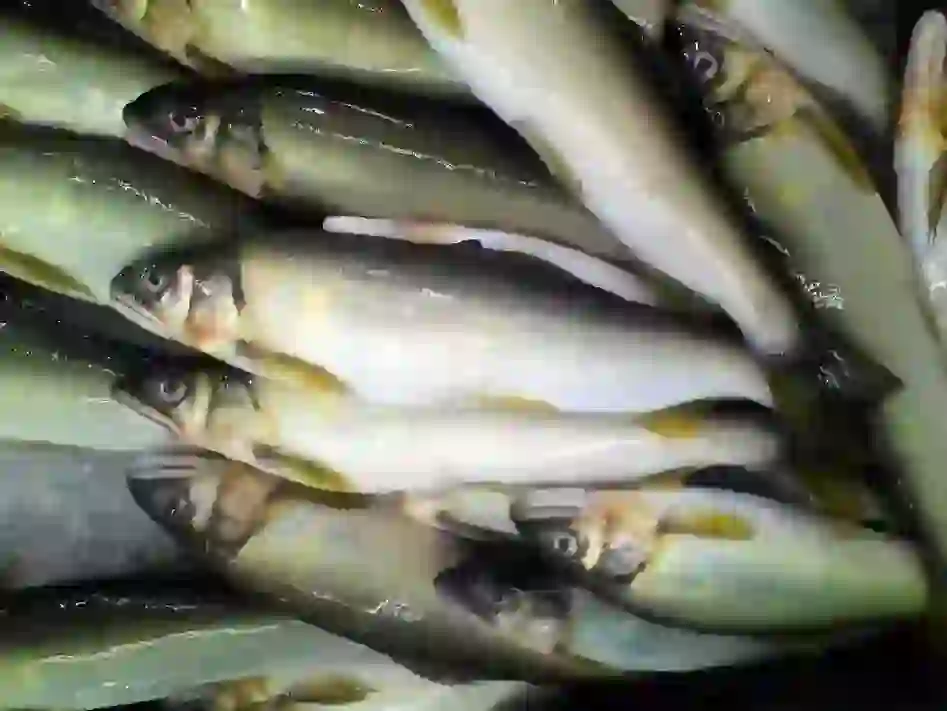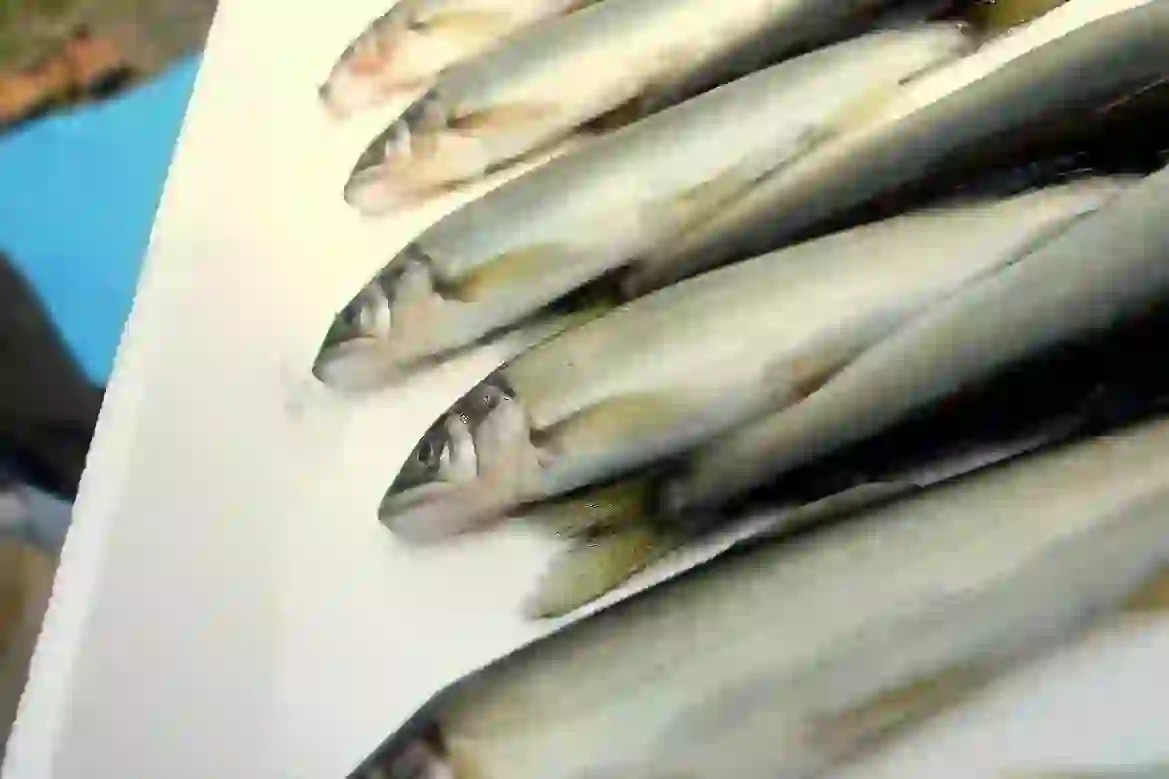
Ayu (Sweetfish)
Ayu (Sweetfish)
Ayu (Sweetfish)
Have you heard of the fish called "Ayu"? It's a fish very familiar to Japanese people. Ayu is famous as a representative ingredient of summer, often enjoyed as grilled young ayu or tempura. Let's introduce the Ayu, also known as the "Queen of Clear Streams" for its sleek and beautiful body that moves with the flow of the river!
Ayu (Sweetfish) Basic Infomation

Basic Information
Class: Actinopterygii Order: Osmeriformes Family: Plecoglossidae Genus: Plecoglossus Body Length: 10-30cm Ayu are found from the Korean Peninsula to Vietnam overseas, and from Hokkaido to southern Kyushu in Japan. As mentioned earlier, Ayu is known as the "Queen of Clear Streams" for its streamlined, slender, and beautiful body. In addition to the pectoral, dorsal, and caudal fins, Ayu has a fin called the "adipose fin" located between the dorsal and caudal fins. When young, their entire body is a mixture of gray and green with black dorsal fins and elliptical yellow marks behind the pectoral fins. As they mature, their belly turns yellowish, and the elliptical yellow marks become more pronounced. They also develop a "nuptial coloration," where the black part of the dorsal fin expands, and an orange band appears under the belly, indicating maturity. Ayu's mouth is large, extending to the area below the eyes, but their teeth are round and comb-like. Males and females can be distinguished by their caudal fins. Males have long, angular caudal fins, while females have triangular ones with a concave rear edge. Additionally, the black nuptial coloration is more pronounced in males.
Ayu (Sweetfish) Q&A

What is the Origin of the Name Ayu?
There are various theories about the origin of the name Ayu. It was once called "Ahi" in ancient times, where "A" was a term of endearment, and "Hi" was a suffix for fish names, meaning "a lovely and tasty fish." This evolved into "Aio," "Ayo," and finally "Ayu." Another theory suggests that Ayu, being an offering to the gods, derived from "Aye," meaning "feast." Another theory suggests that the name Ayu comes from "Ayu-ruru," meaning "to descend," as Ayu move downstream to spawn. The origin of the kanji for Ayu (鮎) is also unclear. It combines the kanji for fish (魚) and divination (占). One theory suggests this is because Ayu were caught to predict the outcome of battles. Another suggests it's due to Ayu's territorial nature, as they occupy and defend specific areas. However, in China, the kanji 鮎 refers to catfish, and in Japan during the Nara period, it also referred to catfish. The kanji 年魚 (year fish) was used to refer to Ayu, as they live for about a year. Ayu is also known by various other names, such as "Kogyo" (fragrant fish) for its melon-like aroma, "Ginkougiyo" (silver mouth fish) for its shiny mouth, "Keirin" (mountain stream sardine) for its resemblance to sardines, "Sairingyo" (small scale fish) for its fine scales, and "Kusu-giyou" (Kusu fish) named after the village of Kusu in Nara Prefecture, which was famous for presenting Ayu to the imperial court. In English, Ayu is sometimes called "Sweetfish" due to its sweet aroma.

Why Do Ayu Live Where They Do?
Ayu live in the upper and middle reaches of rivers, clear lakes, and dam lakes. They prefer areas with a mixture of rocks and pebbles in clean water. They feed on algae on the rocks, making Japan's rivers an ideal habitat. Conversely, they cannot live in muddy or murky waters, which is why they are rare overseas. This habitat applies to adult Ayu, but where do young Ayu live? Young Ayu live in the sea. After hatching, they move to the sea and return to rivers as they grow. This lifestyle is called "amphidromous migration," where they live in both the sea and rivers. They grow in the sea and return to their birthplace as adults. However, the "Koayu" in Lake Biwa do not go to the sea and live in the lake all their lives, experiencing a different lifestyle from their sea-going counterparts.

What Do Ayu Eat?
As mentioned earlier, Ayu feed on algae on rocks. They scrape the algae off the rocks with their comb-like teeth, leaving marks known as "Hami-ato." This makes it easy to see where they have fed. While young Ayu in the sea feed on plankton and small shrimp, they switch to algae once they return to the river. Their diet changes with their environment. The Koayu in Lake Biwa feed on daphnia and other small aquatic organisms.

Is It True That Ayu Live Only One Year?
Ayu hatch, move to the sea, return to the river, spawn in autumn, and die, all within a year. However, this does not mean their lifespan is strictly one year. They can live longer if they do not spawn, but they die after fulfilling their role in reproduction. Some late-maturing Ayu can live over two years, dedicating their life to reproducing. Let's take a closer look at their life cycle. Ayu spawn in autumn, moving from the upper and middle reaches to the lower reaches of rivers. They lay eggs on small stones in clean, well-aerated areas. They lay 10,000 to 20,000 eggs before dying. The eggs hatch in about two weeks, and the tiny, transparent fry, about 6mm long, swim to the sea to survive the winter, which is harsher in the river. The fry live in relatively low salinity areas in the sea, feeding on plankton, small shrimp, and aquatic insects. They grow rapidly, developing scales when they reach 59-63mm in length, marking the first step toward adulthood. By spring, they grow to 5-10cm and return to the river. Once in the upper and middle reaches of the river, they initially feed on aquatic insects and live in groups. As they start feeding on algae like adults, they leave the group and establish territories to secure their food. This territorial behavior is evident as their bodies turn yellow, and the yellow marks behind their pectoral fins become more pronounced. Ayu perceive yellow strongly, and this coloration helps avoid conflicts by signaling occupied territories. In autumn, they move downstream to spawn and complete their life cycle. Both males and females die after spawning, dedicating their lives to reproduction.

Is Ayu a Taste of Early Summer?
Natural Ayu are caught only in early summer, making them famous as an early summer delicacy. Many people may have seen scenes of Ayu being grilled and eaten by rivers. Ayu's aroma varies with their diet, often described as melon or cucumber-like. This distinctive aroma signals the arrival of summer for many. In addition to grilled Ayu and tempura, Ayu can also be eaten raw, although it's not recommended due to the risk of parasites. If eating raw, it's advised to remove the intestines and scales, chill the fish in cold water, and marinate it in vinegar or salt. Some regions have specialties like "Ayu sushi," showing that Ayu can be enjoyed in various ways beyond grilling and tempura.

Are Most Ayu Farmed?
While there were many natural Ayu in the past, the number has decreased, and farming has become more common. Why are natural Ayu less abundant? The construction of dams without considering river environments is a major reason. Dams prevent Ayu from returning upstream after coming from the sea. Even if they manage to go upstream, it's difficult for them to go downstream to spawn. Ayu lay eggs on small stones in the lower reaches, but dams block the transport of these stones. Another reason is "cold water disease," a bacterial infection introduced from overseas, which caused a significant decline in Ayu populations in the late 1990s. One species, the Ryukyu Ayu, living in Okinawa, is critically endangered due to these factors. It is classified as Critically Endangered (CR) by the IUCN. Farmed Ayu are raised for consumption and to restock rivers with fry. These released Ayu are sometimes called "semi-natural." However, farmed Ayu lack the distinctive aroma of wild Ayu. Diseases like "gurgeosis" also pose challenges, as infected fish must be culled, and all equipment must be sterilized. Farming presents many challenges. Efforts to restore wild Ayu are ongoing, including cleaning their habitats, creating suitable river environments, and transporting small stones to aid spawning. While it may take time to see many wild Ayu in rivers again, simple actions like not littering can help accelerate this process.

Would you like to become a part of the 'Animalbook.jp'?
Turn your knowledge into Q&A and share it with the world. ※Publication will be activated after purchase. Let's share information together!
Ayu (Sweetfish) Type of List

Information
Congratulations! You are the first commenter!

Create Your Favorite List!
Ayu (Sweetfish)
Save the animals you love! Build your own list to quickly revisit your favorites later.

Would you like to leave a comment?
※Please note: This is for the purchase of rights to post comments within the article.
Find Your Favorites!
Our shop offers a unique and attractive selection of goods themed around various animals.
Ayu (Sweetfish) References
Ayu (Sweetfish) Introduction of media used

Totti, CC0, via Wikimedia Commons

出典:https://unsplash.com/ja/写真/皿の上にある魚の束-k81MF3PRJY8

other
出典:https://commons.wikimedia.org/wiki/File:Plecoglossus_altivelis_altivelis_hami-ato1.jpg

other
出典:https://pixabay.com/ja/photos/魚-焼き魚-川魚-淡水魚-7342865/

other
出典:https://commons.wikimedia.org/wiki/File:CWD_Plecoglossus_altivelis_altivelis.jpg

Help Enrich Our Animalbook.jp with Your Media!
We are constantly looking to expand and enrich our Animalbook.jp with amazing photos and videos of animals. If you have any media that you'd like to share, please contribute and help us showcase the beauty and diversity of the animal kingdom. Your submissions will be credited and featured in our encyclopedia, reaching a wide audience of animal lovers.



















